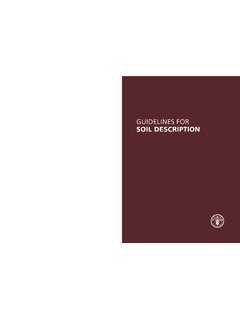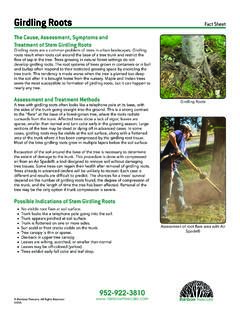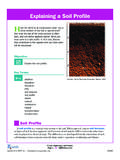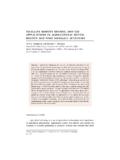Transcription of LIVESTOCK 03 POLICY BRIEF - Food and Agriculture ...
1 LIVESTOCK . POLICY BRIEF 03. Photo: Rogerio M. Mauricio/LEAD. Cattle ranching and deforestation During the 1990s, the portion of the globe covered by forests shrank by an estimated 94 000 square kilometres a year, an area roughly the size of Portugal. Most of the land that was cleared and burned was converted to growing crops and grazing Over the past quarter century, LIVESTOCK (graph 1). In Latin America, in particular, forests have been cleared most of the deforested land ended up as pasture from an area the size of India. used to raise cattle in extensive grazing systems. Particularly in Central and South Typically, the deforestation process starts when America, expansion of pastures for roads are cut through the forest , opening it up LIVESTOCK production has been one of for logging and mining.
2 Once the forest along the road has been cleared, commercial or subsistence the driving forces behind this wholesale farmers move in and start growing crops. But destruction. forest soils are too nutrient-poor and fragile to Deforestation causes incalculable sustain crops for long. After two or three years, the soil is depleted. Crop yields fall. The farmers environmental damage, releasing let the grass grow and move on. And the ranchers billions of tonnes of carbon dioxide into move in. the atmosphere and driving thousands of species of life to extinction each year. Little investment is needed to start raising cattle on cheap or abandoned land where grass is already Effective policies are urgently needed growing.
3 And the returns can be high, at least for a to discourage expansion of LIVESTOCK while. After just ve to 10 years, overgrazing and production in forest areas and promote nutrient loss turn the rainforest land that was once a storehouse of biological diversity into an eroded sustainable grazing systems that will wasteland. halt the cycle of degradation and abandonment on cleared forest lands. LIVESTOCK Information, Sector Analysis and POLICY Branch Animal Production and Health Division Short-term pro ts, long-term costs washed away into streams and rivers. The link between deforestation and cattle ranching is The entire sequence of destruction and degradation, from strongest in Latin America. In Central America, forest area lush forest to barren wasteland, often takes less than a decade.
4 The environmental damage it wreaks is largely has been reduced by almost 40 percent over the past 40. irreversible and will be felt worldwide for generations. years. Over the same period, pasture areas and the cattle Converting cleared forest lands to pasture frequently population increased rapidly (graph 2). compounds the damage. The environmental impact of The LIVESTOCK Environment and Development Initiative deforestation and pasture conversion includes: (LEAD - ) recently used a Carbon dioxide emissions Clearing and burning of sophisticated system for modelling land use change forests releases billions of tonnes of carbon dioxide and to predict the scale and location of deforestation and other greenhouse gases into the atmosphere each year.
5 Pasture expansion for the year 2010. The results con rm Experts estimate that deforestation causes roughly one- that extensive grazing of cattle will continue to expand, quarter of all human-induced carbon emissions. Since mostly at the expense of forest cover. If the projections trees absorb carbon from the atmosphere and convert it are accurate, by the year 2010 cattle will be grazing on to woody tissue, deforestation also contributes to the more than 24 million hectares of land that had been forest buildup of greenhouse gases by destroying valuable carbon a decade earlier. Nearly two-thirds of the deforested land sinks . Pastures populated only by native grasses and cows will be converted to pasture.
6 The study produced a map absorb signi cantly less carbon than most other agricultural highlighting hotspots of forest clearing and pasture systems, including pastures planted with highly vigorous expansion that can be used to focus the agenda for policies grasses or with shrubs and trees to provide fodder. and research (see map, facing page). Loss of biodiversity Tropical forests host more than 13 A substantial and increasing share of deforested cropland million distinct species, representing more than two-thirds is also dedicated to expanding LIVESTOCK production through of all the world's plants and animals. Experts estimate that intensive, large-scale production of soybeans and other in the course of a decade between two and ve percent feed crops.
7 Between 1994 and 2004, land area devoted to of all rain forest species will become extinct, largely as a growing soybeans in Latin America more than doubled to result of habitat loss caused by deforestation. Monoculture 39 million ha, making it the largest area for a single crop, pastures are inhospitable to many species of birds and far above maize, which ranks second at 28 million ha. This invertebrates that require diverse habitats. trend has been driven mainly by the sharp increase in Soil degradation Fragile forest soils can support an demand for LIVESTOCK products, which led to a tripling of abundance of life only because fallen leaves and branches global meat production between 1980 and 2002.
8 Most of provide nutrients, because the forest canopy protects them this increased production came from large-scale, intensive against the scorching sun and torrential rains, and because LIVESTOCK operations in China and other East Asian countries, extensive root structures prevent erosion. When the trees where land scarcity has led producers to rely increasingly on are gone, the soil quickly becomes depleted. Native grasses imported feed. This demand for feed, combined with other provide few nutrients and little protection for the soil and factors, has triggered increased production and exports overgrazing accelerates nutrient loss and erosion. of feed from countries like Brazil where land is relatively Water pollution Forests often serve as nature's water abundant, partly as a result of deforestation.
9 Some of the puri cation plants, as rain water percolates through soil policies highlighted here may help to address the role of held in place by the complex root structures of several increased feed production in deforestation, but a full layers of trees. Without the protective forest canopy and discussion of the problem and of POLICY options for dealing roots, the soil loses its capacity to retain water and is often with it fall outside the scope of this BRIEF . 1 Percentage of forest area change 2 forest area, pasture area and cattle by change process, 1990-2000 population in Central America, 1961-2000. percentage of total area change Index values (1961 = 100). 70. 200. 60 Cattle population 50 Pasture area forest area 40.
10 30 150. 20. 10. 0. Africa Latin Anerica Asia 100. Expansion of shifting cultivation into undisturbed forests Intensification of Agriculture in shifting cultivation areas Conversion of forest area to small-scale permanent Agriculture Conversion of forest area to Large-scale permanent Agriculture Gains in forest area and canopy cover 50. Other 1961 1970 1980 1990 2000. Source: FAO. Source: FAO. 2 LIVESTOCK POLICY BRIEF . Projected deforestation hotspots and diffuse deforestation areas, 2000-2010. Legend Deforestation hotspots crop land expansion pasture expansion Diffuse deforestation crop land expansion pasture expansion crop and pasture expansion Generalized land use forest grazed pasture cropland urban, bare or water shrub land 0 500 1 000 km xed vegetation 3 Share of deforested land converted to pasture 4 Share of deforested land in hotspots (deforestation and cropland, 2000-2010 in closed forest ) and diffuse deforestation areas (deforestation in fragmented forest ), 2000-2010.















